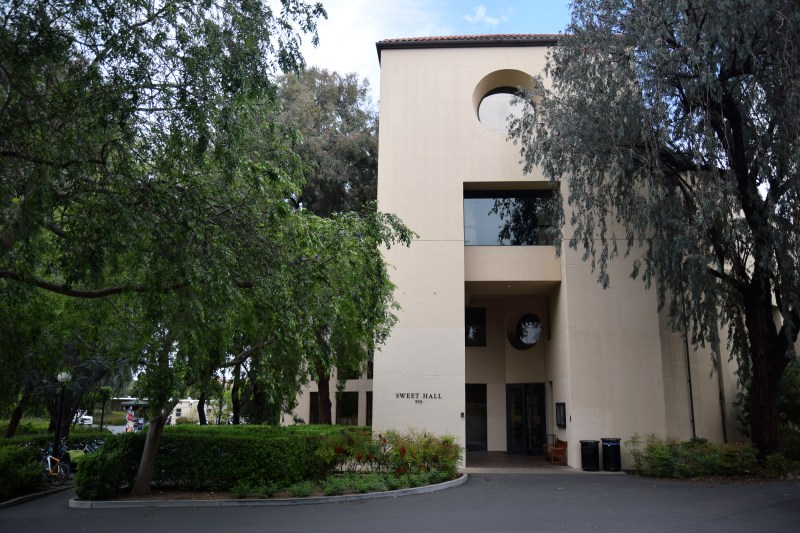Over the last several years, the Undergraduate Advising and Research (UAR) office has been involved in a long-range planning process to increase its number of advisers in order to better meet student needs. The UAR — which, along with maintaining its namesake advising and research responsibilities, also facilitates new students’ transition to Stanford — ultimately plans to onboard approximately 12 new full-time advisers over the next several years.
Changes to academic advising for undergraduates
According to Associate Vice Provost for Undergraduate Education and Director of Undergraduate Advising and Research Louis Newman, each adviser is currently assigned around four to five hundred students.
“That’s way more students than any one adviser could possibly see regularly,” Newman said. “So if you want to be able to really help students … [with] navigating a big, complex research university and thinking through all the different options that are available, we simply need to have more advisers to be able to meet more regularly with students.”
The main aim of UAR’s expansion plan is to increase the number of advisers to work with an assigned cohort of students. In the coming academic year, UAR will have two new advisers on staff. One will be a new Academic Advising Director (AAD), and the other will be another pre-professional adviser in order to address the growing student interest in the pre-law track.
“Our goal long-term is to have enough academic advisers working through our office that every incoming student could meet with that person once every quarter for their first year or maybe even to the point [until when] they declare a major,” Newman said. That person, he said, could then lift students’ quarterly registration hold, which is currently done by a Stanford Newcomer Guide (SNG).
A student’s AAD is assigned to them based on their residence hall. However, because students may live in different residence halls each year, some choose to continue seeing the AAD that they have already built a relationship in a previous year, as opposed to meeting with AAD assigned to their residence hall for the new year.
Newman said that the UAR is rethinking this system, considering the possibility of assigning each incoming students a single AAD with whom they remain for their entire undergraduate career. Under a potential new AAD advising system, each AAD would be assigned roughly equal numbers of freshmen, sophomores, juniors and seniors.
“The incoming students who were assigned to [an AAD] would more or less balance with the seniors who have graduated, so that they would keep the same basic workload, the same basic numbers of advisers,” Newman said, emphasizing that this plan may not be possible immediately, but could be enacted in the future after UAR adds more advisers.
“Advisers are generally really looking forward to the ability to work with students throughout their entire time at Stanford,” said Lead Academic Advising Director Raymond Chen. “It would allow the students and advisers to develop a longer-term relationship and to work throughout their trajectory and academic development.”
As the UAR reenvisions the undergraduate advising process, Chen said, “I think it would be a positive thing to have the same students for four years.”
At the same time, however, the UAR also is considering how this new system would retain the advantages of the current setup, which makes it convenient for students to meet with advisers whose offices are located right in their residential spaces.
“The primary values are making sure that students have more access to advisers and [that] they have a more continuous relationship with a single adviser across their four years so they feel like there’s somebody that they know who knows them,” Newman said. “The notion is that you would have one primary adviser, and then you would stick with that person, because we think that kind of continuity to the relationship contributes to the strongest and the best advising.”
An uncertain future for Stanford Newcomer Guides
As the UAR adds more advisers, Newman said that they may also reconsider the SNG program.
A third branch of under UAR is a group that works to help students integrate into the community at Stanford through new student programs such as Approaching Stanford and New Student Orientation and through the Stanford Newcomer Guide (SNG) program, which assigns every incoming student to a mentor who works on campus.
According to Newman, academic questions about majors and courses are directed more towards full-time academic advisers such as AADs; an SNG’s role is to provide a welcoming presence for students.
“We might get rid of [the SNG program], or it might be transformed into something else and might become an optional program that students could choose if they wanted to have a Stanford guide, and you could opt in,” Newman said. “We haven’t thought about that because we’re a few years away, at least, from hiring the number of advisers that we need to reach the capacity that would enable us to make that decision.”
“For now, the SNG program will continue to function as it is, and we’ll continue incrementally to add new advisers,” he said.
Contact Michelle Leung at mleung2 ‘at’ stanford.edu.
